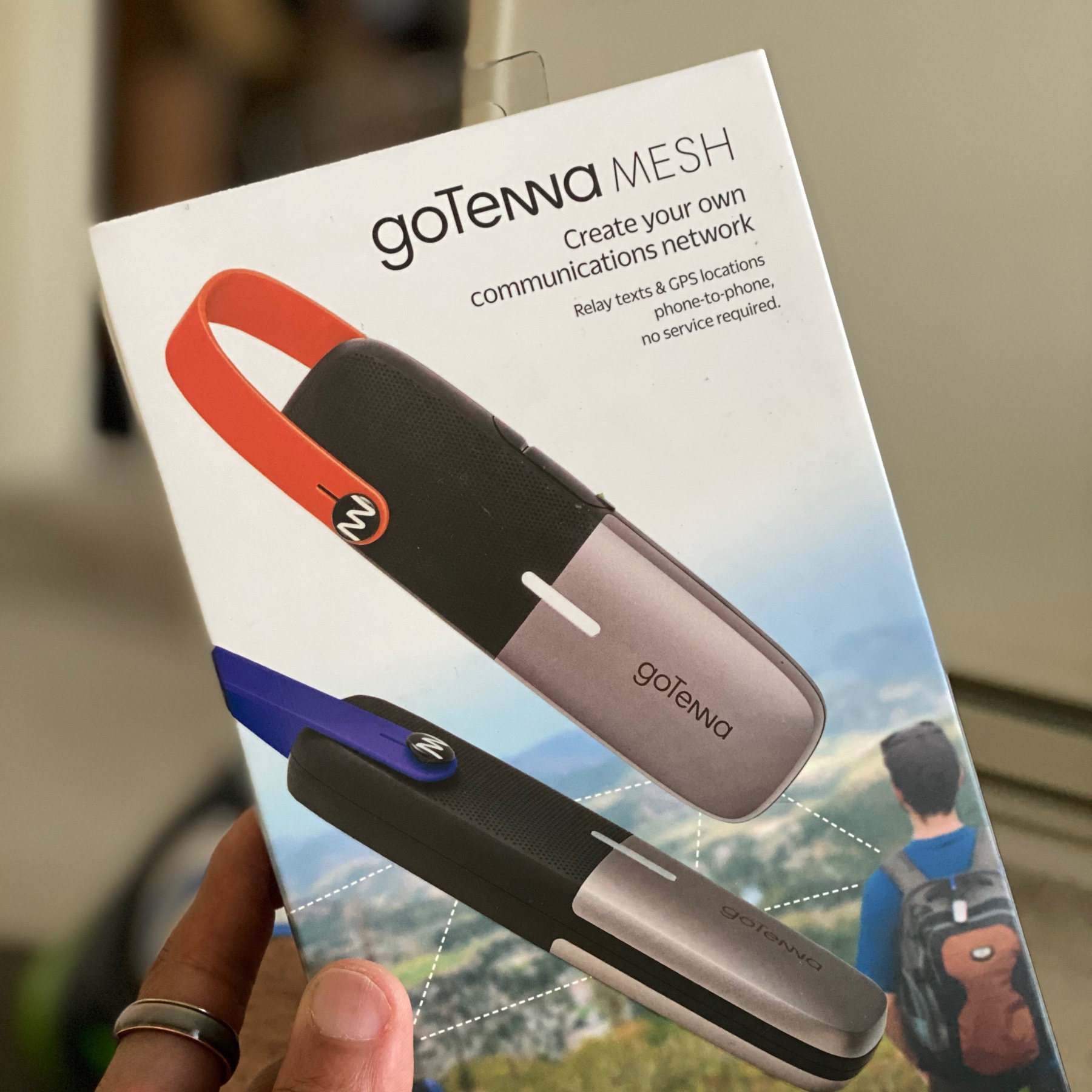Experiments with GoTenna Mesh

Many years back, in a previous endeavor, had looked into the potential and promise of mesh networking and decentralized communications. Besides the (usual) fun of something new to tinker with, there was a sense of being on the other side of the coin to what the consumer Internet had evolved towards.
There were some worthwhile experiments and experiences going down that path. Some of which were the very seeds of this site and endeavor now. Yet, that appeal to both plan for the worst, while tinkering around the edges still hasn’t left. As such, have decided to take a look at GoTenna Mesh.
GoTenna is a mesh networking platform utilizing a combination of a piece of hardware, and some (repurposed) radio spectrum. And while it is clearly a solution for those who like to camp/boat/climb/etc in remote areas, there’s a bit of a ‘hey, this should probably be a part of one’s emergency communications bag” also. There’s a little of both in the context of this play now, which is where this post comes in. The consumer internet is evolving, and mesh networking might be a very solid tent-pole for a normative part of it.
Setup of one’s Mesh device is fairly simple. You download the app, and then it walks you thru discovering one of the two mesh devices you’ve purchase, charged, and powered on. Once you have completed setup, you can device to either use your existing phone number, a generated ID, to be the means you connect with/be found by others who have a mesh account also. Decisions such as whether to share your location, upload your address book, and utilize the “shout” broadcasting service are normal fare for any social network, and is the case here. But, these are opt-in. You can be as present as you’d like to be, or need to be, when using GoTenna. There is also a premium layer to the service which enables an SMS relay service, alongside a few other location-based services. Pretty neat overall, and clearly a solid fit for adventuring.
This experiment will hopefully get to play with most of these bits. Much like the previous experiments with FireChat and Nokia”s Mobile Web Server, there’s a distinct appeal to a “net you have more control over.” One which is resilient, but also covers the bases in most aspects of user experience. I imagine thst GoTenna should roll well for sometime. Hopefully, it will not become a primary service, for an extended period anyways.
The experience so far has been fair. While there’s some fun in using GoTenna, there’s not yet been much in terms of interacting with others on the platform. That might not be for long. According to this map, there are quite a few nodes not too far off from my usual location (might have made a good stitch between larger nodes as a matter of fact). The app is simple, though clear memories of some of the challenges non-mainstream comms app creep thru a few UI paths. Still, it’s learnable, and mostly easy to use. The hit on the mobile’s battery was impressively low, but (in this user’s case), the app and service being tied to the mobile and not able to go to a cellular watch (or tablet?) kinda feels like a missed opportunity. Mesh networking around all the devices would be an impressive platform extension.
If you are interested in learning more, check out the GoTenna Mesh website. And if you decide to purchase and want to support this site in doing so, use this referral link to get $20 USD off your purchase.
GoTenna has not paid for this post, nor was the mesh device or any software associated with it provided to me/this site as compensation for this review. This was purchased by me/this site, and these views are shared w/o their previous knowledge or review of the content.